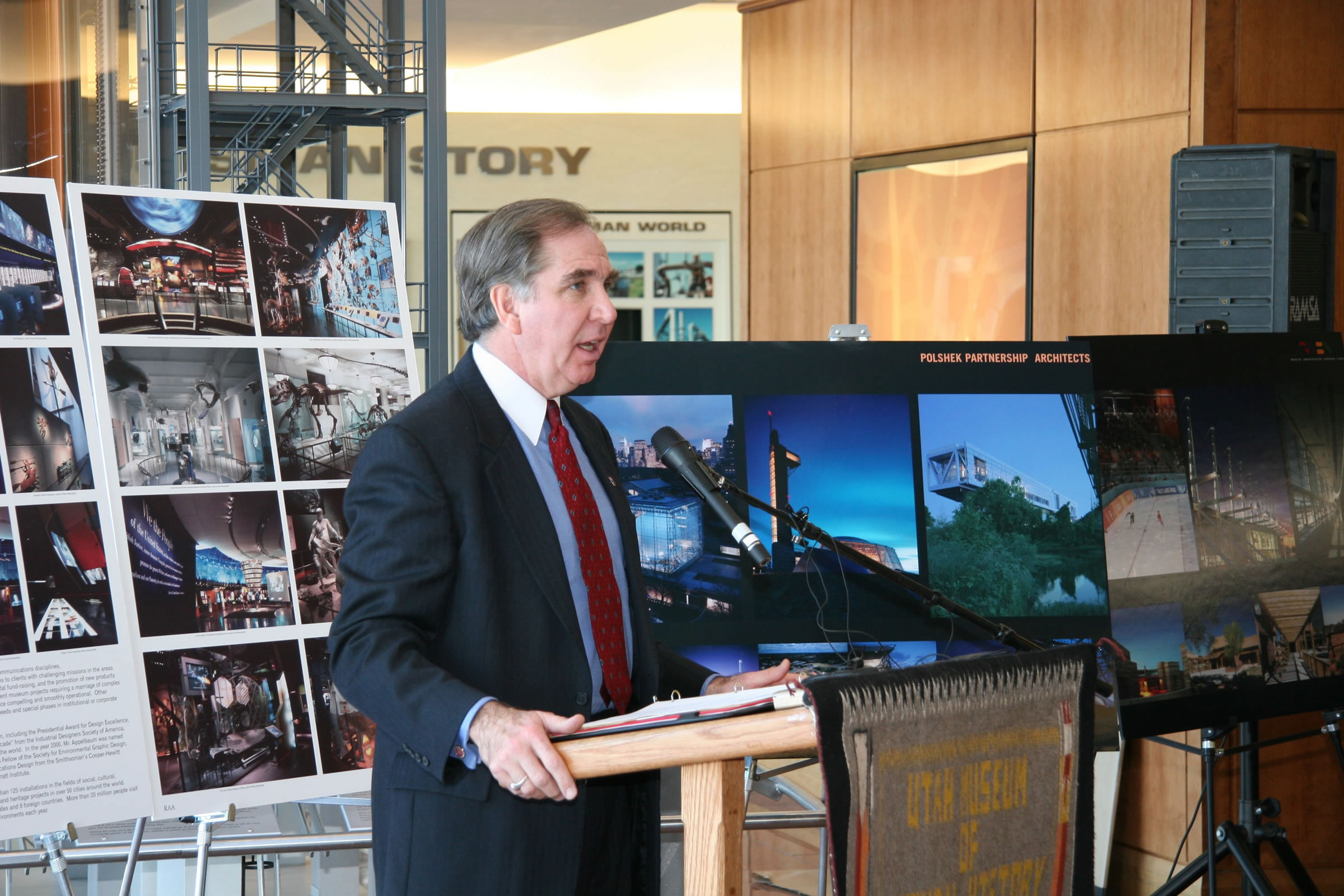
Jan. 20, 2005 – Citing world-class designing experience and a shared vision of achieving mission and involving the community, the Utah Museum of Natural History at the University of Utah announced yesterday at a press conference that Polshek Partnerships Architects and Gillies Stransky Brems Smith (GSBS) will design the new museum and Ralph Applebaum Associates as the exhibit designer.
The Division of Facilities Construction and Management of the state facilitated the selection process and the committees were comprised of community, University, and state representatives. The new museum project garnered high attention in the architectural field, with over a dozen national firms bidding on the project.
“Following a lengthy interview process, the selection committee felt the best choice for our vision was Polshek Partnerships,” said Donna Land Maldonado, a committee representative. “Polshek is recognized nationally for exciting designs that reflect the mission of organizations. We believe they will help create a new space that we all will enjoy and that will contribute to the important work of the Museum – of the past and future – as well as showcasing the beauty and power of the natural world.”
Based in New York, Polshek Partnerships has worked with many nonprofit cultural organizations. Recent projects include the renovation of Carnegie Hall, the New York Hall of Science, the expansion of the Brooklyn Museum of Art, and the creation of the Rose Center for Earth and Space at the American Museum of Natural History. This highly-respected firm will be responsible for designing the building and surrounding spaces.
“It is a privilege to work with the Utah Museum of Natural History whose values and mission are consonant with our convictions about architecture’s obligation to enrich the environment and people’s lives with meaningful public buildings and places,” said Todd Schliemann, the Polshek design partner who will be leading the project. “We are thrilled to be working with the Museum on its move to a new location and helping to connect this vibrant, and extremely important, institution with the Wasatch Front, the state, and the nation.”
The local firm of GSBS also is nationally and locally known for its design excellence and its strong ability to manage large projects. Designated as the architect of record, GSBS will closely work with Polshek Partnerships to organize and manage the project and will provide technical continuity throughout the design phase of the project. GSBS is known for its work around the state including the Olympic Speed Skating Oval, the South Towne Exposition Center, the Conference Center for the Church of Jesus Christ of Latter-Day Saints, and the Big Water and Cannonville Visitor’s Centers for the new Grand Staircase-Escalante National Monument, among others.
Ralph Applebaum Associates was selected to design the exhibits. Applebaum Associates designed exhibit halls in the American Museum of Natural History and the National Holocaust Museum, has worked with Museum and community representatives to complete the conceptual exhibit plan and will now continue the work to design the exhibits for the new building. “What a really great museum does is to create health learning habits,” said Ralph Applebaum. “Museums help us discover what we wish to pass along to the next generation.”
With over two million objects, 95 percent of them are stored in the basement due to the lack of exhibit space. The new Museum will make it possible for more of these collections to be displayed, and subsequently interpreted by Museum scientists, making them and their information more available to the public. “It is these collections that hold the answers to understanding our past. It is these same collections that can offer us answers in making present environmental decisions that will affect future generations,” said Executive Director Sarah George. “In addition to more exhibit space, this new building will provide areas needed to prepare and conserve the objects, to properly store the artifacts, and space for researchers world-wide to study the collections and our state’s unique natural history,” said George.
The site of the new Utah Museum of Natural History, the state’s designated natural history museum, will be located at the eastern-edge of Research Park where the University has dedicated 17 acres to a new building. In addition, the University has set aside over 600 acres above the site as a conservation easement. Both actions are described by Museum management as significant commitments to the community, the project, and the natural landscape. The Museum plans to break ground in 2006, with opening set for 2008.
